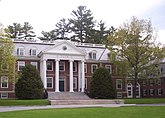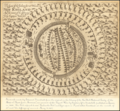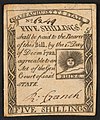Portal:New England
The New England Portal New England is a region comprising six states in the Northeastern United States: Connecticut, Maine, Massachusetts, New Hampshire, Rhode Island, and Vermont. It is bordered by the state of New York to the west and by the Canadian provinces of New Brunswick to the northeast and Quebec to the north. The Gulf of Maine and Atlantic Ocean are to the east and southeast, and Long Island Sound is to the southwest. Boston is New England's largest city and the capital of Massachusetts. Greater Boston is the largest metropolitan area, with nearly a third of New England's population; this area includes Worcester, Massachusetts, the second-largest city in New England, Manchester, New Hampshire, the largest city in New Hampshire, and Providence, Rhode Island, the capital of and largest city in Rhode Island. In 1620, the Pilgrims established Plymouth Colony, the second successful settlement in British America after the Jamestown Settlement in Virginia, founded in 1607. Ten years later, Puritans established Massachusetts Bay Colony north of Plymouth Colony. Over the next 126 years, people in the region fought in four French and Indian Wars until the English colonists and their Iroquois allies defeated the French and their Algonquian allies. (Full article...) Selected article
The Amos Tuck School of Business Administration (or the Tuck School of Business at Dartmouth, as it is now called) is the graduate business school of Dartmouth College in Hanover, New Hampshire. Founded in 1900, Tuck is the oldest graduate school of business in the world, and was the first institution to offer master's degrees in the field of business administration. Tuck is one of six Ivy League business schools and it consistently ranks in the top five in many business school rankings.
Tuck grants only one degree, the Master of Business Administration (MBA), alongside shorter programs for executives and recent college graduates, although there are opportunities for dual degrees with other institutions. The school places a heavy emphasis on its tight-knit and residential character, and has a student population that hovers near 500 students and a full-time faculty of 46. Tuck claims over 8,400 living alumni in a variety of fields, with the highest rate of alumni donation of any business school. (Full article...) Selected biography
Calvin Coolidge was the 30th President of the United States, from 1923 to 1929. He was born in Plymouth, Vermont on July 4, 1872. He went to St. Johnsbury Academy for a year before attending Amherst College. After graduating, he followed the footsteps of a local law firm, and became active in politics. He worked his way up the ladder of Massachusetts state politics, eventually becoming governor of that state. He got placed into the national spotlight after the Boston Police Strike in 1919, and was elected Vice President shortly after. Upon the death of Warren G. Harding, Coolidge became president. He was then reelected in 1924. On January 5, 1933, he died of a heart attack in his home. (Full article...)
Selected picture Credit: Aaron Shikler (1970) General images -The following are images from various New England-related articles on Wikipedia.
Did you know (auto-generated)
Related portalsMore did you know...
Selected State
Vermont
Incorporated 1791 Co-ordinates 44°N 72.7°W Vermont is the 6th least extensive and the 2nd least populous of the 50 United States. It is the only New England state not bordering the Atlantic Ocean. Lake Champlain forms half of Vermont's western border, which it shares with the state of New York. Originally inhabited by two major Native American tribes, much of the territory that is now Vermont was claimed by France during its early colonial period. France ceded the territory to the Kingdom of Great Britain after being defeated in 1763 in the French and Indian War. For many years, the nearby colonies, especially New Hampshire and New York, disputed control of the area. Settlers who held land titles granted by these colonies were opposed by the Green Mountain Boys militia, which eventually prevailed in creating an independent state, the Vermont Republic. Founded in 1777 during the Revolutionary War, the republic lasted for fourteen years. Vermont is one of seventeen U.S. states (along with Texas, Hawaii, the brief Republic of West Florida, and each of the original Thirteen Colonies) to have had a sovereign government in the past. In 1791, Vermont joined the United States as the 14th state, the first outside the original 13 Colonies. It abolished slavery while still independent, and upon joining the Union became the first state to have done so. (Full article...) WikiProjectsAssociated WikimediaThe following Wikimedia Foundation sister projects provide more on this subject:
Discover Wikipedia using portals |
















































































